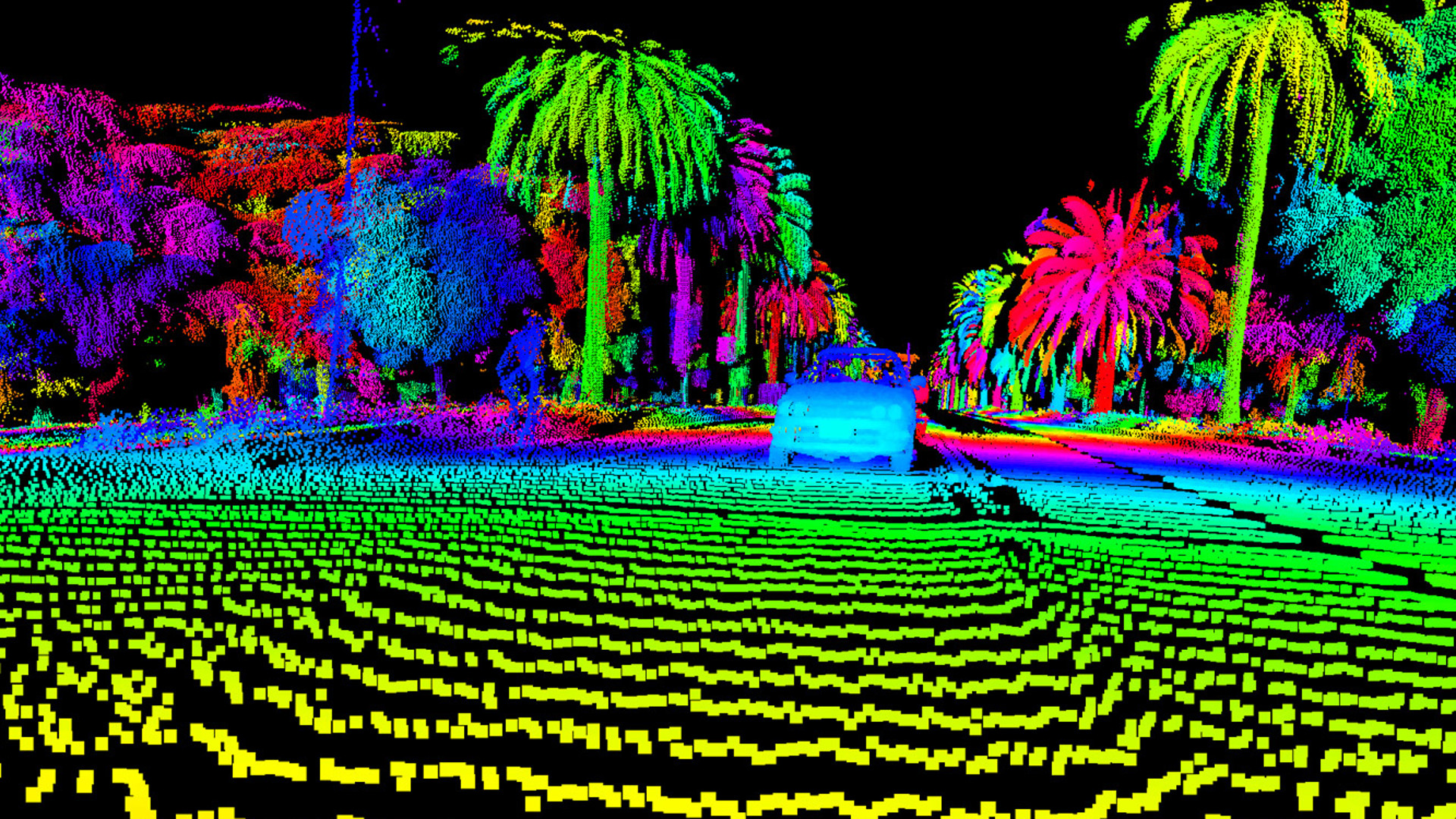

With the near-ceaseless talk about the onset of self-driving cars, it’s easy to shorthand the extremely complicated technology underpinning this promised future. We speak of these cars using “cameras” and “sensors” and “radar” to “see” the world around them, yet outside the tech circles of Silicon Valley there’s not a lot of talk about how these cars actually take in and process all that information.
The New York Times takes a deep dive into the world of lidar (light detection and ranging), the technology that leading experts believe will be the linchpin of the coming autonomous revolution. Lidar uses laser light to constantly sense the shape, size, and position of objects in the surrounding area, translating the results into a real-time feed with a psychedelic bent that usually only comes with taking one too many doses at a music festival.
By scanning the environment both vertically and horizontally with near-infrared light, lidar can create over a million data points per second for the car’s computer to analyze and generate the kind of groovy 3D image seen up top. The old-timey-siren-looking rooftop models have a 360-degree field of vision and can sense objects almost 450 feet ahead and up to 40 feet high. They’re far more precise than standard cameras, which are limited to two dimensions and can be fooled by extreme lighting conditions.
The problem, historically, has been cost (and bird crap). The New York Times points out that Google’s early lidar sensors cost upwards of $75,000 a piece when the company first began researching autonomous cars at the beginning of the decade. And while prices have come down significantly since then, the mass production just isn’t there yet to lower the cost to acceptable levels for automakers.
Because of this, lidar is still used in conjunction with cameras and radar on autonomous cars. One promising solution is solid state lidar, which has the potential to shrink manufacturing costs even further by eliminating the spinning mechanisms that help project the lasers in their rooftop counterparts. Solid state units have a narrower field of vision, but they can be daisy-chained together to offer the same level of protection.
Then there’s the issue of compatibility. Because lidar systems are designed work in concert with a car’s computer to interpret the results, there’s no plug-and-play functionality between the growing field of manufacturers. You can’t just stick a unit from Velodyne on a car that’s rigged to work with Luminar’s technology, for example. They all “see” and “think” a little different.
That picture is further distorted by auto manufacturers partnering up with an array of third-party suppliers for their autonomous development programs, as well as huge companies like Waymo and Uber fighting to come up with their own in-house designs. And then there’s Tesla, which has stuck with a camera-based system for its Autopilot technology and may or may not be preparing to drop its long-held opposition to lidar.
But still, this acid-soaked vision of the future isn’t going anywhere—experts say without lidar, developing fully-autonomous cars will be nearly impossible.